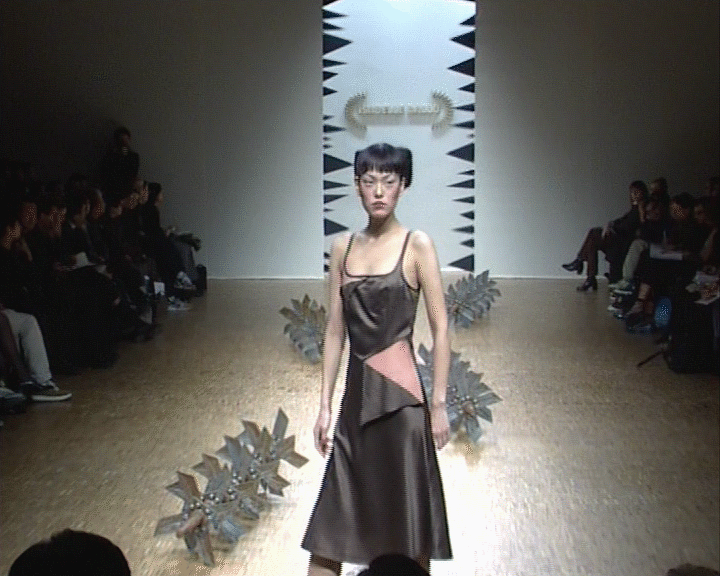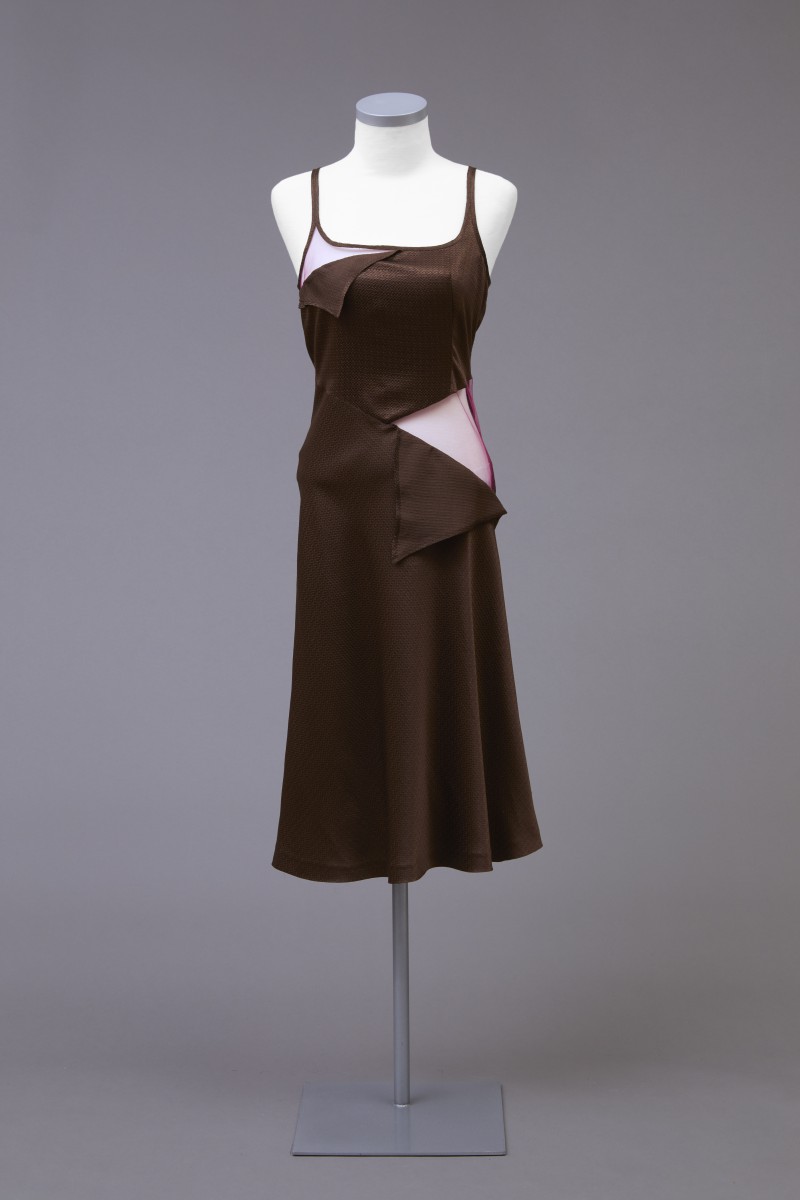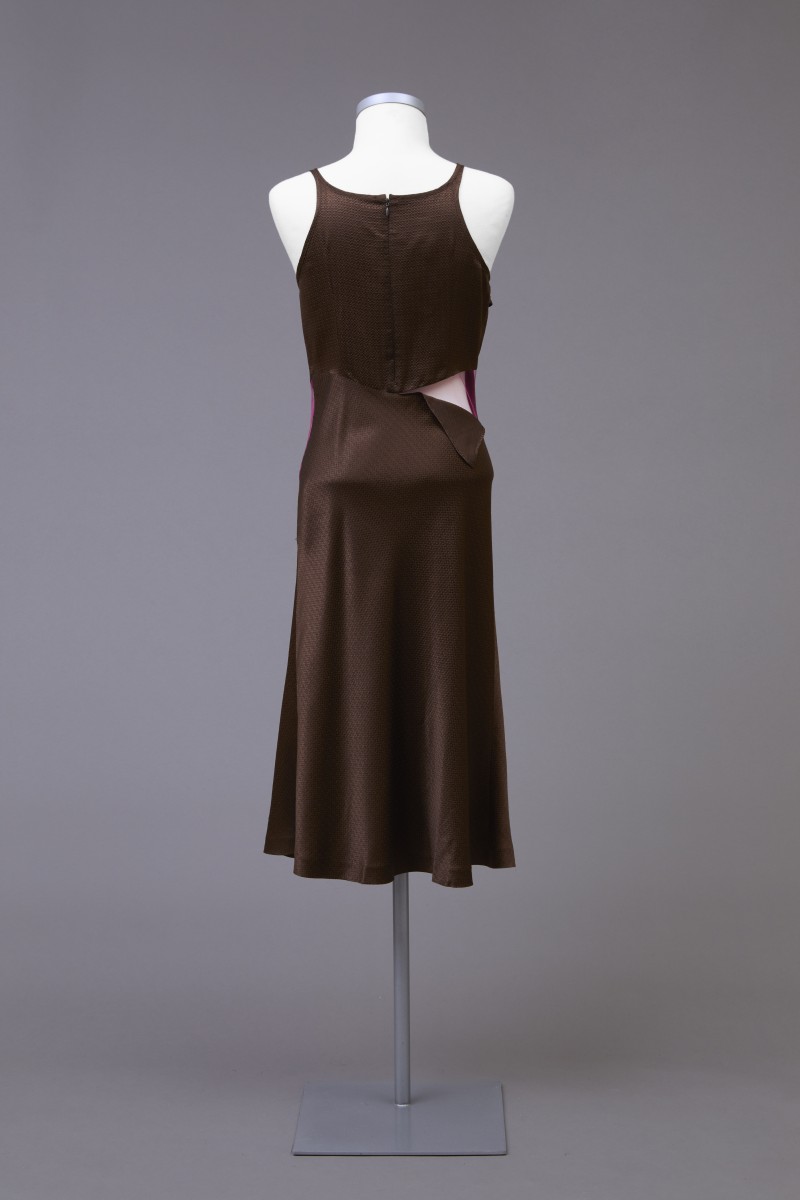Prix ANDAM
Broyage et Anomalie, 1998
What were your motivations when you launched your brand?
I was 22 when I launched my eponymous fashion house, BALLU. At the time, I was driven by a powerful desire for independence and experimentation. There was also a kind of compulsive all-or-nothing approach that guided me—both artistic and emotional—sometimes at odds with commercial imperatives. I was fully committed, relentless, combative … and probably blindly fearless. “Kamasutra”, “Autostop et Touristes”, “Les Écorchés”—my collections told surreal stories of desire, seduction, liberated sensuality, provocation, and the assertion of the body’s rights over the mind. I carefully selected the venues for my shows to give a spectacular soul to these ephemeral narratives: the former Ministry of Finance, the Poste du Louvre central post office, the Foyer de la Madeleine restaurant, the Crazy Horse, and the Cinéma Drugstore. My last design was a pair of black patent leather stilettos, adorned with the emblem of Santiago de Compostela—a symbolic echo of my inner journey: spiritual, fragile, and exalted.
What is one memory you keep of the year you won the ANDAM Fashion Award?
In January 1998, I was awarded the ANDAM Prize for my collection “Broyage et Anomalie”, which was presented at the Carrousel du Louvre in a scenography inspired by minimalist art. Models navigated among the sharp metal blades of agricultural machinery scattered across the floor. Perhaps the collection reflected the ambivalence and implicit questions of the end of the century—between acceleration and disorientation. An immensely intense moment, I remember it as a deeply personal need to defy constraints, transcend hegemonic models, and liberate myself.
What did ANDAM bring to you and your brand?
My first runway show was in 1995. Winning the ANDAM Prize in 1998 illuminated the path ahead and encouraged me to continue. It gave me the energy to take risks, persevere, and shoulder the next 21 collections of clothing and accessories without compromise.
What has been your creative journey since then? What do you do now?
I pursue my vocation through encounters and experiences, collaborating with other fashion houses. My most recent partnership is with Saint James, where I have co-signed capsule collections that reflect my passion for structured lines and refined geometry.
Currently, after taking the time to archive and document all my collections, I am developing a new artistic project: PARAVENTI. This project follows the same conceptual line as my collections, which already treated clothing as a metaphor for the tangible link between the inner and outer worlds, between soul and body, playing with contrasts: restraint /frivolity, coldness/sensuality, stillness/ movement, hidden/revealed, front/back.
I am now designing a series of PARAVENTI, part functional object, part timeless sculpture—new surfaces for emotional projection, a medium for storytelling and expression, reflections of skies and inner landscapes. The movement of bodies in space will inhabit them like a diorama. These vertical screens, which isolate, mask, and protect by concealing, invite a full-body experience of this fundamental, virtual, and real relationship between inside and outside—a physical separation between two realities, where one longs to project oneself to the other side of the screen, into an inaccessible world.
I am currently looking for partners to bring this project to life—all adventurers welcome!
Can you share a personal anecdote or fun fact about one of your collections or experience of entrepreneurship?
A runway show is always a wild adventure…
The first souvenir that comes to mind is Cicciolina—Ilona Staller, the 1980s adult film icon and politician, then in the midst of her divorce from Jeff Koons—who, against all odds, accepted my extravagant request to feature on the invitation for my show, dressed head-to-toe in BALLU. She welcomed me into her apartment in Rome; we didn’t know each other, but an instant complicity was born!
Then there’s the memory of a post-show lunch at le Carrefour de l’Odéon after a presentation at the Institut de l’Architecture—utterly exhausted from sleepless nights, the whole team fell asleep at the table.
Or the guardian angel I only knew over the phone, who suddenly appeared on a Harley, one hand on the handlebars, the other waving a key—heaven-sent—to the Barrio Latino, an incredible venue where I held a show, then later occupied, like a utopia, for weeks, away from prying eyes and pressures.
And of course, the countless and impossible-to-recount misadventures with trucks—often absurdly large compared to my height—which I drove myself to transport collections from the studio to the runway.
Finally, the new owner of the Crazy Horse, whom I convinced—through sheer persistence—to grant me the venue and the dancers for my swimwear collection presentation. He eventually said: “I have never met anyone as stubborn and persuasive as you!” We never actually met, but my final show was at the Crazy Horse — a personal victory.
Where do you see yourself in ten years?
My fortune teller Chou-François predicts major changes in the coming years, and my naturally optimistic nature leads me to believe him! I love undertaking projects that go beyond pre-conceived boundaries, that surpass me. Will my PARAVENTI project, which questions the very idea of framing, unfold into this new horizon?


